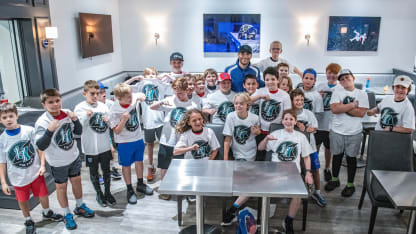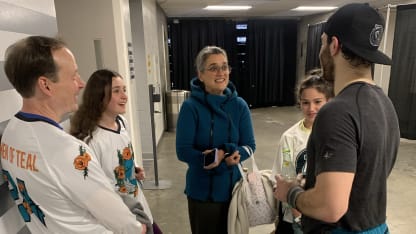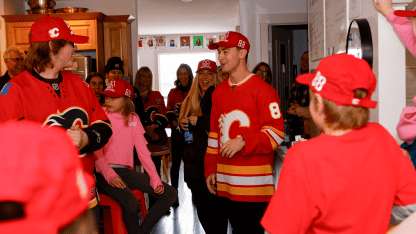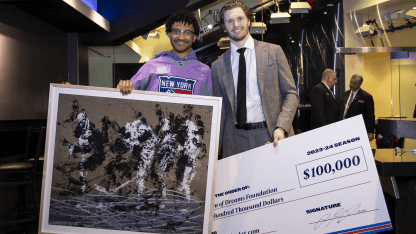Editor’s Note: The King Clancy Memorial Trophy is presented annually to the NHL Player who best exemplifies leadership qualities on and off the ice and has made a noteworthy humanitarian contribution in his community. Each NHL Club nominates a player to be considered for this recognition, and each nominee has a unique and powerful connection to his community efforts. The winner of the award will be announced on May 28. Today, the San Jose Sharks’ nominee for the 2023-24 season -- Luke Kunin -- shares his story.
My experience with Type 1 diabetes can be traced back to two moments: The moment I was diagnosed, and the moment I realized it wouldn’t stop me from playing in the NHL.
When I was 12 years old, my mom took me to the doctor after noticing some changes that didn’t seem right. I was more sluggish than usual; I’d wake up repeatedly in the middle of the night to go to the bathroom; I’d drink two or three bottles of water at a time. Looking back, those are typical signs of Type 1 diabetes -- an autoimmune disease that makes it hard to regulate blood sugar levels because your body can’t produce the insulin it needs.
But we didn’t know that until the doctor reviewed my test results and told me, “You are Type 1 diabetic.”
It was a scary sentence for a kid who’d never heard of diabetes before. My first question to the doctor was, “Am I going to die?”
He said no. So I asked an important follow-up question: “Can I still play hockey?”
I was very relieved when he said yes.
At the same time, I was worried about how T1D would affect me. In my mind, I didn’t just want to “play” hockey. I wanted to reach my dream of making it to the NHL. For the first few days after my diagnosis, I wasn’t sure if anyone could manage the constant challenge of monitoring and treating T1D while competing at the highest level of the sport.
But then I got a call from B.J. Crombeen. B.J. was a forward for the St. Louis Blues who was living with T1D. He’d heard about my story, and he reached out to offer encouragement. I couldn’t believe an NHL player was calling me with proof that my dream was still possible, that I could make it to the NHL too.
His phone call was the moment that inspired me to keep going. And it’s a huge reason why I now use my platform to support the T1D community, informed by my own experience of an NHL player having such a positive impact on my life.
In 2021, I started the Luke Kunin T1D Fund to benefit the Juvenile Diabetes Research Foundation (JDRF), an organization that works to raise awareness of T1D and find ways to cure, prevent and treat the disease. I was playing for the Nashville Predators at the time, and I’d invite kids from the Tennessee chapter of JDRF to come to our games and talk about life on and off the ice.
In 2022, when I joined the San Jose Sharks, I was excited to bring the program with me. This season, I collaborated with the Sharks to launch a merchandise collection, featuring Sharks branding and my “LKT1D” logo, with 50 percent of proceeds going to the T1D Fund. I also work with JDRF’s Northern California chapter to host T1D kids and their families at Sharks games.
























